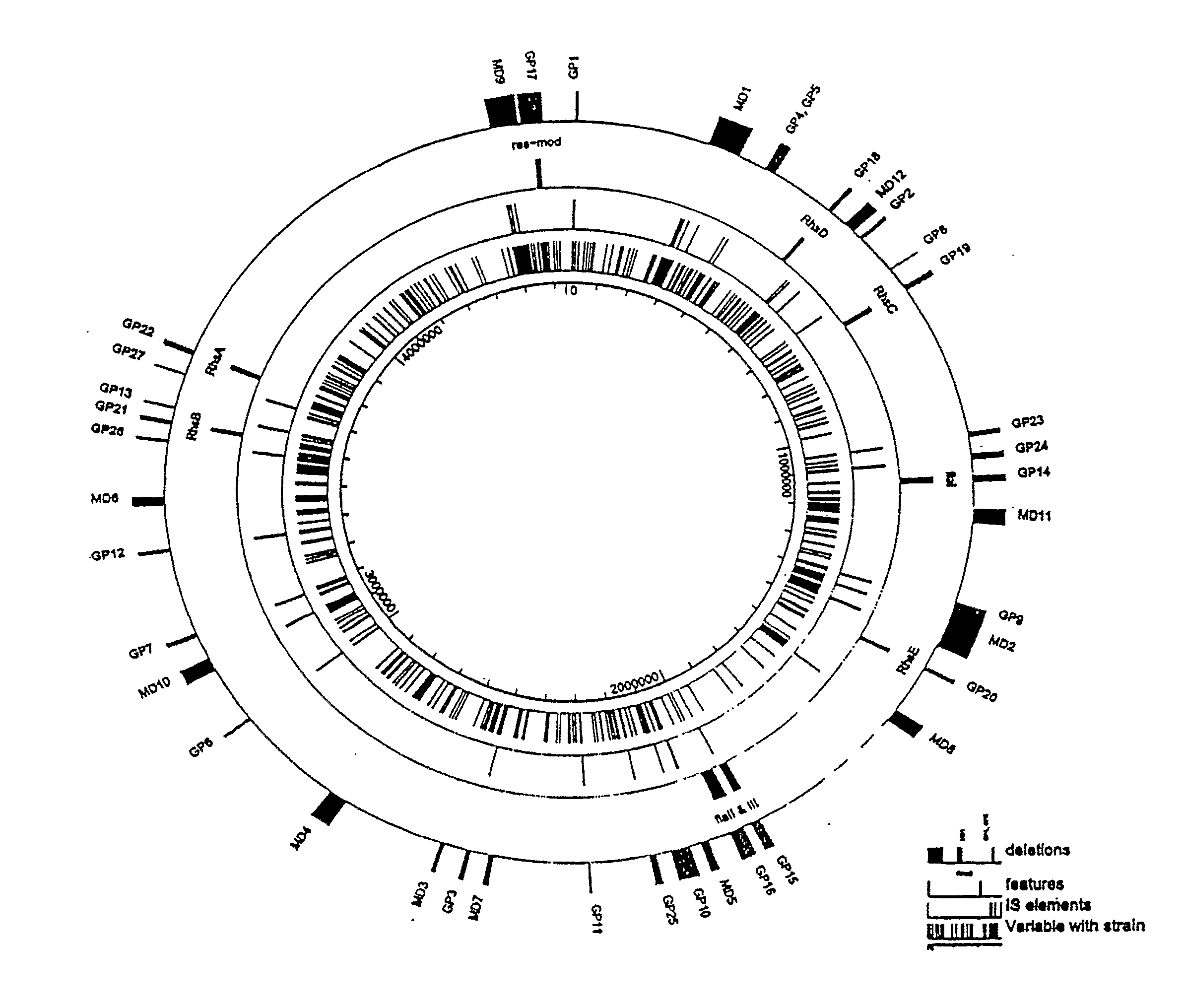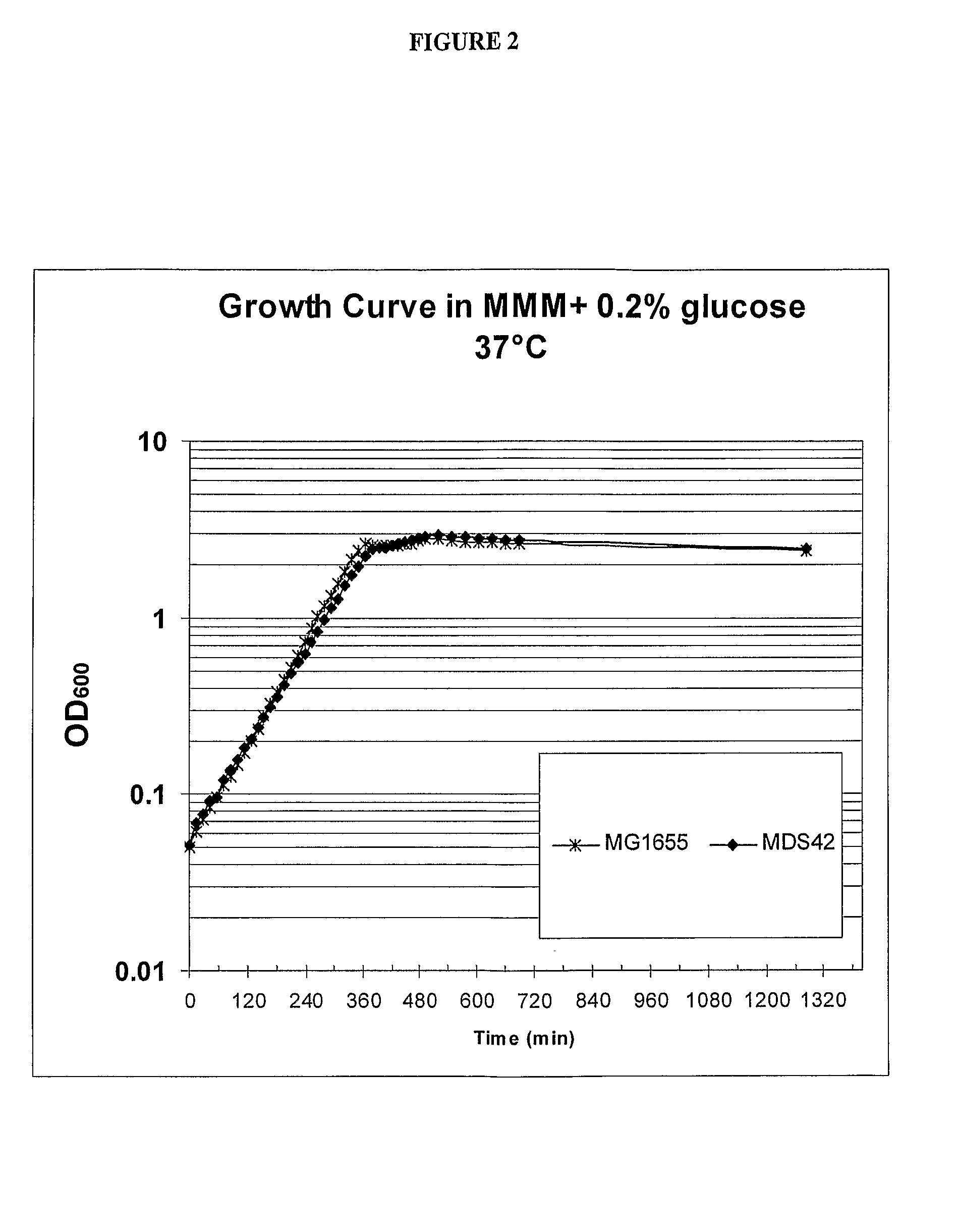Reduced Genome E. Coli
a technology of genome and e. coli, which is applied in the field of genetically modified strains of microorganisms, can solve the problems of ineffective size separation for purification process, adversely affecting the production or purification of desired protein products from engineered bacteria, and certain normal i>e. coli /i>gene products can interfere with the introduction and maintenance of plasmid dna,
- Summary
- Abstract
- Description
- Claims
- Application Information
AI Technical Summary
Benefits of technology
Problems solved by technology
Method used
Image
Examples
example 1
Production of MDS40
[0079]Reduced genome strain MDS40 was produced as described in International Patent Publication No: WO 2003 / 070880, which is incorporated herein by reference. Briefly, a series of reduced genome strains (MDS01-MDS40) were produced by making a series of cumulative deletions of nucleic acid sequences from the parental strain E. coli MG1655 (annotated version m56) (SEQ ID NO: 1), including those regions shown in Table 2.
example 2
Production of MDS41
[0080]Reduced genome strain MDS41 was produced using methods as described in International Patent Publication No. WO 2003 / 070880 by deleting the following nucleic acid region from parental strain MDS40, with reference to SEQ ID NO: 1:
StrainTypeCoordinatesNameBFunctionMDS41CDS167484 . . . 169727fhuAb0150outer membrane protein receptor forferrichrome, colicin M, and phages T1, T5,and phi80MDS41CDS169778 . . . 170575fhuCb0151ATP-binding component of hydroxymate-dependent iron transportMDS41CDS170575 . . . 171465fhuDb0152hydroxamate-dependent iron uptakecytoplasmic membrane componentMDS41CDS171462 . . . 173444fhuBb0153hydroxamate-dependent iron uptakecytoplasmic membrane component
example 3
Production of MDS42
[0081]Reduced genome strain MDS42 was produced using methods as described in International Patent Publication No. WO 2003 / 070880 by deleting the following nucleic acid region from parental strain MDS41, with reference to SEQ ID NO: 1:
StrainTypeCoordinatesNameBFunctionMDS42CDS3088369 . . . 3089076endAb2945DNA-specificendonuclease I
PUM
| Property | Measurement | Unit |
|---|---|---|
| nucleic acid sequence | aaaaa | aaaaa |
Abstract
Description
Claims
Application Information
 Login to View More
Login to View More - R&D
- Intellectual Property
- Life Sciences
- Materials
- Tech Scout
- Unparalleled Data Quality
- Higher Quality Content
- 60% Fewer Hallucinations
Browse by: Latest US Patents, China's latest patents, Technical Efficacy Thesaurus, Application Domain, Technology Topic, Popular Technical Reports.
© 2025 PatSnap. All rights reserved.Legal|Privacy policy|Modern Slavery Act Transparency Statement|Sitemap|About US| Contact US: help@patsnap.com



